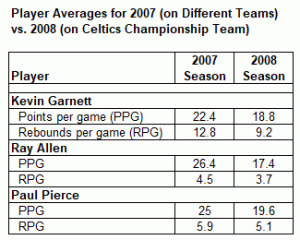Even if you’re not an NFL fan, you have to be impressed by one team’s performance in one of the most amazing games ever. And if you’re a leader on any level, what happened that Saturday afternoon offers valuable lessons for your organization.
At halftime in their game on December 17, 2022, the Minnesota Vikings trailed the Indianapolis Colts by a score of 33-0. Forty minutes of playing time later, the Vikings had pulled off the biggest comeback in NFL history, emerging with a 39-36 victory. What lessons can business leaders take away from this historic achievement?
Before answering that question, just a quick note about exactly how remarkable that comeback win was. As reported by CBS Sports, “According to Sportradar data available since 1930, the Vikings became only the second team in 1,551 regular-season or playoff games to trail by 30 or more points and still win.” The game has its own Wikipedia page.
No one knows exactly what head coach Kevin O’Connell told his team at halftime, and we may not until he writes a book someday, but the football-specific X’s and O’s of his speech wouldn’t have much relevance for business leaders anyway.
But what business leaders can learn from this amazing comeback is less about the messages delivered during that 12-minute halftime talk and more about what O’Connell and his staff did over the five months between the start of training camp in July to that painful walk to the locker room at halftime on December 17.
Here’s a closer look at the building blocks O’Connell and his staff put in place to enable the Vikings to go from a mediocre 8-9 team in 2021 to that incredible comeback against the Colts en route to a 13-4 season and a spot in the playoffs—and how organizations can build them into their enterprise DNA.
9 Building Blocks of Winning Teams in Business and Football
The ability to perform at a high level and achieve remarkable goals, whether in business or sports, doesn’t just happen. It’s a combination and culmination of many factors, built upon a foundation of these nine components.
1. Culture
During the 2021 season, the Vikings went 6-8 in one-score games. The 2022 Vikings were 10-0 in the regular season in those close contests. That transformation was largely due to the difference in culture created by Kevin O’Connell versus his predecessor, head coach Mike Zimmer.
O’Connell acknowledged the importance of culture following the comeback win over the Colts:
“After the Minnesota Vikings completed the greatest comeback win in NFL history and clinched the NFC North on Saturday, first-year coach Kevin O’Connell received all sorts of congratulatory phone calls and text messages. But he didn’t dwell too long on all the praise coming his way…
‘Honestly, what I’ve spent the majority of my time thinking about is what put us in that situation in the first place and the role that I played in that, and more importantly, what I need to do better for our team,’ O’Connell said (following the game)…
‘We’ve got to look at kind of an accountability, both as players and coaches, to making sure that we hold ourselves to that standard from the jump…I did hear from a lot of the mentors and people that have helped shape my football journey and culture,’ O’Connell said.”
High-performing organizations likewise build that culture through leadership, accountability, clear expectations, and practices like a regular cadence of team building and professional development training.
2. Workplace Relationships
Closely related to culture, strong workplace relationships are vital to employee well-being and building high-performing teams.
The shift in culture, and the Vikings’ approach to coach-player relationships, was apparent even before the season started. As the Minneapolis StarTribune reported:
“One of the defining quotes…was from veteran linebacker Eric Kendricks: ‘I don’t think a fear-based organization is the way to go.’ Kendricks had identified a culture shift he was hoping to see…and indeed the choices of Kevin O’Connell as coach and Kwesi Adofo-Mensah as General Manager ushered in the idea of ‘communicators’ and ‘collaborators’ addressed by owner Mark Wilf after Zimmer and (Vikings General Manager) Rick Spielman were fired.”
An article from Heavy.com made the point further, revealing that:
“Kevin O’Connell, a new-school leader at the age of 37, made a point to be as candid and transparent with players as possible. That means plenty of conversation, and the coach’s office should be where some more personal chats are held…
“O’Connell’s approach immediately diverged from Zimmer’s. During training camp, O’Connell invited (star wide receiver Justin) Jefferson to his office for a conversation, which is how he learned that Jefferson — top five receiver in the NFL, two-time Pro Bowler, most popular Viking by far — had not only never been to the head coach’s office but didn’t have any idea where it was.”
Strong workplace relationships improve communication and the open sharing of ideas, which are vital to achieving high levels of performance—in business as well as football.
3. Belief in the Mission
Every team in the NFL wants to win the Super Bowl. What distinguishes those that make the playoffs from teams that struggle is, largely, a belief that they have the coaches, players, and system in place to make it happen.
On winning teams, players play for each other as well as their organization and the fans. On losing teams, there’s dissention and distrust.
Companies that achieve extraordinary things foster that belief in the mission: think Apple, Tesla, Starbucks, Cisco, SpaceX, Patagonia, and Google. People want to work for those companies, and they will often put forth extraordinary efforts to meet goals, because they believe in the mission.
4. Collaboration
In football, success depends on every player understanding their role on every play, plus on-field communication about last-second adjustments.
Collaboration is vital to every winning team, to an extent often not appreciated. Roy Charette, a leader in the fields of team building and professional development training, and managing partner at Best Corporate Events, cites the example of the 2008 NBA champion Boston Celtics.
“In 2007, Paul Pierce, Kevin Garnett, and Ray Allen were all putting up 25, 26 points per game. But they played on different teams. When they all came to the Celtics in 2008 and won the championship, every one of them had lower average points per game. Every one of them had lower statistical data the year they won the championship because they had to become a team instead of being individual all-stars.”
Here are their actual numbers, per NBA.com:

To build a high-performing business team, professionals who are naturally competing (for promotions, recognition, bonuses, etc.) likewise have to learn how to excel both as individual contributors and as collaborators on work teams. We have a program dedicated to teaching exactly these skills, called Competition to Collaboration®.
5. Professional Development and Succession Planning
Because of the salary cap in the NFL, no franchise can simply load itself up with all of the top players at their positions and then dominate their competitors. Every team is a mix of veterans and young players, early-round draft choices, and undrafted walk-ons.
Teams have to win with the talent they have, and that means developing every player to optimize their skills.
In the business world, companies also have cost and personnel constraints, which makes professional development and one-on-one coaching so vital. Along with specific skills training, these programs help employees to improve in their current roles as well as preparing them for advancement opportunities.
Tying that back to sports, as Roy notes, “As a coach, you have to create other coaches. You have a defensive coach, an offensive coach, and a special teams coach. And the head coach has to train those folks how to impart their knowledge to players. You’re even training some of your players to be coaches on the field.”
6. Resilience
The Vikings pulled off their comeback against the Colts despite missing several starters from the beginning of the season, particularly in their banged-up defensive secondary.
That is, of course, typical for NFL teams by the 15th week of the season, which is why the “next man up” concept is so crucial. Every player on the roster has to be prepared, through individual effort and coaching, to step in at any time.
Most businesses don’t lose the services of their employees to torn ACLs or pulled hamstrings, of course, but people will miss work time due to illness, PTO, or family leave. Others will retire, leave the company, or get promoted.
In Roy’s words, “In business as in sports, being able to ‘win without your star players’ is a sign of a great team—and great coaching. When a co-worker gets promoted, leaves the company, or is out temporarily, the rest of the team is asked to step up and keep delivering the same results, just as NFL teams are expected to win even when some of their stars are standing in street clothes on the sidelines.”
7. Strategy + Agility
In the NFL, every season starts with developing an overall offensive and defensive scheme, and every game is prepared for using a game plan. Obviously, in the 12-minute halftime span between the Vikings being outscored 33-0, then turning the game around to outscore the Colts 39-3, they couldn’t completely change that plan.
They needed to have the agility to make tactical adjustments while motivating players to believe in the underlying game plan and scheme. The ability for the Vikings to improve their execution on offense and dial up pressure on the defensive side came from months of preparation, not some miraculous 12-minute transformation at halftime.
There’s no directly analogous situation in business to trailing 33-0 at halftime, but enterprises constantly have to adapt to challenging circumstances: competitor moves, changes in government regulation, a PR crisis, shifts in consumer preferences, bad economic news, the failure of a key supplier, or any number of other scenarios.
A prime example is the sudden shift to remote work when the pandemic hit in March 2020. Organizations that had both a solid underlying business strategy and the ability to adapt quickly were able to redesign operations with minimal business disruption. Those that didn’t have these characteristics were still struggling weeks later to maintain even basic functions.
8. Leadership at Every Level
While no one has reported on exactly what transpired in that Vikings locker room, one key exchange between veteran cornerback Patrick Peterson and quarterback Kirk Cousins, plus the reaction of O’Connell, has been covered by ESPN and other sources:
Peterson: My mentality didn’t change when we were down 33-0. Came into halftime, what did I say? I said we need five touchdowns to win the game. Take it one at a time. Believe in one another. And let’s see what happens.
Cousins: I didn’t know if [Peterson] was being sarcastic or what. When I looked at him, he was serious. I think his point was, ‘We’re not going to let them score anymore. So if you can get five touchdowns, that will be good enough.’
O’Connell: It was a nice little moment for me to lead right in off of. I said, ‘Pat, you’re exactly right.’ That’s what we needed at the time. It was probably the most motivated I’ve been to kind of challenge our players.
As noted above, great coaches create other coaches; not just on their staff, but among the players on the field as well.
High-performing businesses do the same, creating leaders at all levels and in all areas of the business who influence others to do more and do better, whether they have any official management title or not.
And that’s why we’ve written about how every employee can benefit from leadership training. Employees who aren’t leaders today may be called upon to step into leadership roles tomorrow. And even those who have no interest in moving into management roles will still benefit from a better understanding of the perspective of leadership, and how to influence others.
9. Trust
After almost 70 minutes of play, the contest between the Vikings and Colts came down to a last-second field goal attempt. The Vikings’ Greg Joseph is not the most reliable kicker in the league. Or even in the top 10. Actually, for the 2022 season, among kickers with at least 30 field goal attempts, Joseph ranked 18th.
What’s more, the Vikings have a history of lack of trust in the kicker position. But in the final seconds of that Colts game, as Yahoo! News reported:
“A week after Joseph was hoisted onto his teammates’ shoulder pads after a winning 40-yard field goal vs. the Colts, Joseph said he appreciated the trust coach Kevin O’Connell showed by letting him even try a 61-yarder — 5 yards longer than the previous high by both Joseph and any kicker in Vikings history.”
In business, employees who feel trusted are more likely to be engaged, take ownership of their results, and feel purpose in their work. On the other hand, those who are micromanaged are less productive, more likely to quit, have lower morale, and are less engaged. Micromanagement destroys trust.
How Team Building Builds Winning Teams in Business
While a wide range of factors contribute to creating those nine building blocks of successful teams, professional development and team building programs can play a role in all of them.
“Team building,” says Roy, “delivers activities that remind people of what it looks and feels like to be supportive of each other, to be engaged with each other, and to position each other for success.”
One of the most vital contributions that team building programs make to organizational success, adds Roy, is positioning other people in the group for success. “It’s not just your individual success. The entire group has to be successful in order for you to ‘win.’ Every one of our programs reminds people of what it looks and feels like to be engaged, not multitasking or checked out during an activity. That’s huge.
“When we deliver a program like Igniting Team Performance™, Breaking Through, or Momentum, we run a series of small activities. Each one builds on the success of the previous. People don’t get that a lot at work.
“But if employees can be reminded of what it looks and feels like to be celebrating, high-fiving, cheering, and acknowledging and recognizing each other because they are nailing it on a series of activities no one’s ever seen before, it’s an amazingly powerful and useful block of time. They’re collaborating, communicating, and rotating in leadership roles, all in two hours. Participants are engaging with each other in a very positive manner from the start to the finish.”
Team building programs, particularly corporate social responsibility (CSR) programs such as Bike Build Donation®, Build-a-Guitar®, or our Mini-Golf Build and Food Donation use collaboration in pursuit of a greater purpose—giving back to the community—in a way that creates an emotionally powerful shared experience. Much like winning a game against all odds.
Final Thoughts: What the Vikings’ Comeback Teaches Business Leaders
The Minnesota Vikings’ historic comeback win against the Indianapolis Colts on December 17, 2022, offers many lessons for business leaders seeking to build high-performing teams and organizations. While it would be fascinating to know exactly what was said by head coach Kevin O’Connell in that locker room at halftime, it’s clear the foundation for that achievement was laid months before.
There are (at least) nine key building blocks for creating winning teams, in sports or business. Organizations outside of sports will never face the direct equivalent of a 33-0 halftime deficit, but having these building blocks in place will enable them to respond rapidly and effectively to any adverse business events they may face.
Winning teams are more than just collections of extraordinarily talented individuals. The best coaches and leaders are able to articulate a shared vision, build a culture of high performance and collaboration, develop the talent they have in place to support resilience and succession planning, and adapt quickly and effectively to challenges.
Putting these building blocks into place requires a range of skills and actions. Team building and professional development programs can play an important role, through their four pillars of improving communication, building workplace relationships, enhancing engagement, and creating powerful shared experiences.


